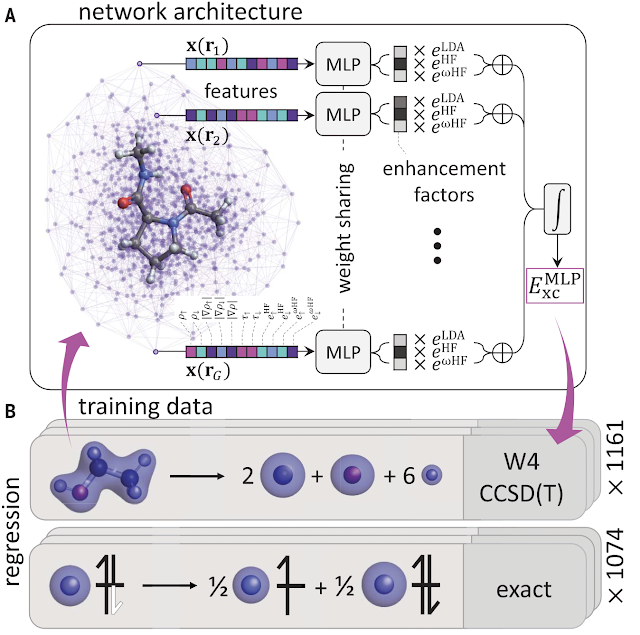James Kirkpatrick, Brendan McMorrow, David H. P. Turban, Alexander L. Gaunt, James S. Spencer, Alexander G. D. G. Matthews, Annette Obika, Louis Thiry, Meire Fortunato, David Pfau, Lara Román Castellanos, Stig Petersen, Alexander W. R. Nelson, Pushmeet Kohli, Paula Mori-Sánchez, Demis Hassabis, Aron J. Cohen (2021) (OA version)
Highlighted by Jan Jensen
This paper presents a new ML-exchange-correlation potential that gives improved results compared to state-of-the-art functionals, especially for barriers. Most importantly, it demonstrates the importance of including fractional charge and spin in the training set when developing new functionals. Fractional charge-systems help reduce the self-interaction error while fractional spin-systems supplies information about static correlation. For example, the current functional gives reasonable bond dissociation curves and future functionals of this kind may work considerably better on transition metal-containing systems with significant multi-reference character.

This work is licensed under a Creative Commons Attribution 4.0 International License.
